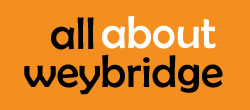Private Swimming Lessons for Kids: When To Start and What To Expect

Introducing children to swimming early helps them gain confidence in the water and prepares them for a range of physical and cognitive milestones. Parents often weigh several factors when deciding the right time to begin, from their child’s comfort level to the structure of the lessons available. Private swimming lessons present a distinct experience from group-based classes, and the decision to pursue one or the other often depends on the child’s learning needs, attention span, and personality.
Starting Out and What Shapes the Right Time
The decision to begin private lessons varies between families, but most start when children are between the ages of three and six. This stage typically offers a balance between basic physical coordination and the capacity to follow instructions. Some, however, start sooner, particularly when the aim is to encourage water acclimation and familiarity rather than stroke development.
There’s no single timetable that fits every child. Observing a child’s reactions to water, their ability to engage with adult guidance, and their readiness for structured interaction all play a part. In areas offering specialised support, such as Birmingham swimming lessons, there are often options tailored to different developmental stages. These can be helpful benchmarks, but the timing ultimately comes down to individual readiness.
Why Private Lessons Appeal to Many Families
Private lessons offer focused attention that group classes sometimes cannot provide. In a quieter environment, the swim instructor can tailor each session to the child’s temperament and learning speed. This arrangement can be especially helpful for children who feel overwhelmed in group settings or need repeated encouragement to feel comfortable in the water.
Parents often find that one-on-one instruction allows for faster progress. Children can explore specific aquatic skills at a pace suited to their individual confidence levels, and instructors can modify exercises without needing to balance a group’s range of abilities. As a result, swim instructors can observe subtle cues and make timely adjustments, which helps build trust and familiarity between the child and the teacher.
What Children Typically Learn
Initial lessons generally begin with water acclimation, focusing on simple activities that help children feel secure. Instructors might introduce floating, controlled breathing, and basic arm and leg movements. These small steps gradually lead to more coordinated actions like gliding and beginner strokes.
As children continue, skills practised might include kicking techniques, use of floatation aids, and early lessons in personal water safety. While stroke technique is often introduced later, many instructors integrate basic movement patterns early to build a sense of rhythm and body control.
Lessons also touch on situational awareness—how to respond if they accidentally fall in, or how to reach pool edges and call for help. These early lessons in water safety give children a framework they can rely on, even if they aren’t yet strong swimmers.
Parent Expectations and Support Roles
Parents are often encouraged to observe or participate in early sessions, particularly when the child is very young. Being present without interfering helps children feel secure while maintaining the instructor’s lead. Clear communication between parents and instructors helps identify which areas need extra focus, what progress has been made, and where additional encouragement may be helpful outside lesson time.
Many swim schools offer lesson packages, allowing parents to plan a series of sessions in advance. This consistency helps children anticipate and adjust to the routine. In some cases, flexible scheduling is available, which can be useful when working around school hours or holidays.
Comparing Lesson Types
Group lessons often suit children who are sociable and enjoy learning alongside peers. The structure typically follows a set curriculum and involves sharing the instructor’s attention with others. This can be motivating for some, but for others it may feel distracting or discouraging.
Buddy lessons provide a middle ground, pairing two children of similar ability and age. This format can support collaborative learning without the distractions that larger group settings sometimes bring.
For children with unique learning needs or who require a quieter setting, private lessons offer greater adaptability. Some providers also offer home swim lessons, giving families the convenience of learning in a familiar setting.
Safety and Instructor Credentials
Choosing lessons led by certified professionals is essential. Accredited swim schools typically require instructors to hold certifications not just in swimming techniques, but also in first aid and water rescue. Water safety instructors are trained to manage emergencies and teach skills that can help prevent accidents.
Additionally, parents often look for instructors who are fully insured. This adds a layer of reassurance and reflects a level of professionalism expected from reputable providers.

Longer-Term Development
Learning to swim is not a one-time milestone—it evolves. As children move through different stages of development, their swimming goals may change. Some may go on to learn advanced strokes or train for competitions, while others focus on swimming as a lifelong recreational skill.
Participation in swim classes also supports broader growth. Coordination, stamina, and spatial awareness all improve with regular lessons. Emotional benefits also emerge, such as persistence, following instructions, and confidence around peers and adults.
Eventually, children who start early and grow comfortable in water may even progress to leadership roles themselves, participating in adult swim classes or training to be instructors in future.
Conclusion
Private swimming lessons for kids offer an adaptable, child-focused approach that suits a range of learning styles and comfort levels. Timing the start of lessons depends on more than just age—it’s about readiness, interest, and how a child responds to the water. Whether the goal is to build water safety skills, improve stroke development, or simply gain confidence, structured lessons with certified instructors provide a steady, supportive way forward. For families exploring swimming options, private lessons offer clarity, flexibility, and opportunities that fit both short-term needs and longer-term development.
